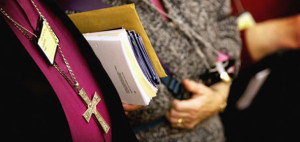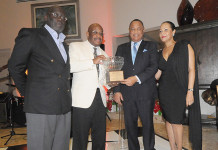
Female clergy could abandon the Church of England if too many concessions are offered to people wanting to opt out of their authority, a campaign group has warned.
Members of the General Synod meet this weekend to decide what safeguards there should be for those who do not accept the leadership of female bishops.
At present women can be ordained as priests but remain barred from the higher office of bishop. The synod has already given its overwhelming support to the principle of changing church law to allow female bishops.
The campaign group Women and the Church wants a law without “caveats or conditions” that could limit the role of female bishops and allow opponents to refuse their leadership.
It fears that if the synod votes for measures to protect traditionalists from female ministry that female clergy will turn to Christian denominations that are more accepting of women in senior positions.
Sally Barnes, from Women and the Church, said: “If you institutionalize this kind of discrimination, it creates more problems. The issues of division will not be healing. If this goes down, Christian women who want women bishops have said, ‘We’re waiting for it to happen, we’re so sick of the opposition. We will just leave.'”
This latest synod threatens to be even more fraught and rancorous than the one in July 2008, when it threw out the compromises demanded by traditionalists. Organizers have set aside three days to tackle up to 41 amendments.
The Catholic Group, which comprises members of the synod who oppose women’s ordination, wants three new “men-only” dioceses in the Church of England and a bishop tending exclusively to traditionalists.
It said it was looking to the archbishops of Canterbury and York, Rowan Williams and John Sentamu, to show leadership with their amendment, which proposes that female bishops would not have complete control over their dioceses. Instead, they would have to co-ordinate their role and responsibilities with a traditionalist bishop.
The archbishops’ amendment is almost identical to the one put forward by the Catholic Group.
Senior churchwomen have written to the archbishops, asking them to withdraw the amendment. Williams and Sentamu risk humiliation and rebellion if the synod votes down their proposal. But it is unlikely that the synod would approve legislation that did not have the support of its two most senior figures.
The Church of England has struggled with the issue of female clergy for more than a decade. In 1994, when it first ordained female priests, around 500 clerics left to join the Roman Catholic church.
If female bishops are appointed the numbers leaving could be higher. In 2008 around 1,300 clerics wrote to the archbishop of Canterbury to say they would rather resign than accept the authority of female bishops. Last October the Vatican offered a route to converting to Roman Catholicism while maintaining elements of Anglican heritage.
More than 5,000 women have entered the Church of England since 1994, and the number of female ordinands continues to increase.







